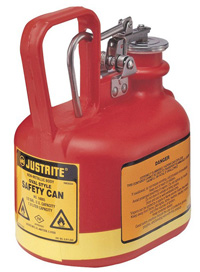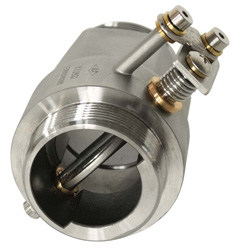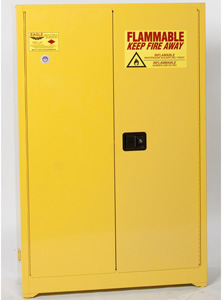| The Home page of ILPI's Safety Data Sheet (SDS) Resource, the leader in SDS information since 1995! | |
| The history and philosophy behind this resource. | |
| A curated collection of books and reference materials concerning Safety Data Sheets and closely related topics. | |
| Paste your plain text SDS into the SDS-Demystifier, and it will be converted into a hypertext-enriched document with links to detailed explanations of each key term. | |
| An extensive list of frequently asked questions about Safety Data Sheets including regulations, content, compliance, and more. | |
| A humorous take on Safety Data Sheet jargon. Fill in the blanks on our entry form to generate a personalized Unsafety Data Sheet to share with your coworkers. | |
| Since 1995, we've maintained this massive curated list of the best places to find Safety Data Sheets on the Internet. | |
| You are here! Way more than a glossary, this hypertext-enhanced resource covers hundreds of SDS-related terms and expert knowledge. Each entry includes both the SDS relevance and links to additional authoritative resources. | |
| Archived results of Safety Data Sheet related polls taken by some of our millions of site visitors | |
| The OSHA regulations behind SDS regulations, including the inspection guidelines and over 400 official interpretations letters under the Hazard Communication Standard | |
| Commercial suppliers of SDS authoring and management software as well as cloud compliance services. | |
| Commercial companies that will create SDS's for your specific needs as well as SDS translation companies. |

Safety signs, banners, and scoreboards? Get yours at Safety Emporium!
Definition
A solvent is a substance that dissolves another substance or substances to form a solution (a homogeneous mixture). The solvent is the component in the solution that is present in the largest amount or is the one that determines the state of matter (i.e. solid, liquid, gas) of the solution. Solvents are usually, but not always, liquids. They can also be gases or solids.
The material dissolved in the solvent is called the solute. Together, the solvent and solute comprise the solution.

Store and dispense flammable liquids safely with flammable liquid safety cans from Safety Emporium.
Additional Info
Some examples:
- In a solution containing 5 grams of sugar and 1 liter (1000 grams) of water, the water is the solvent because it is present in the largest quantity.
- In a solution containing 300 grams of calcium chloride (CaCl2) and 200 grams of water, water is considered the solvent even though it is not present in the greatest amount because this mixture is a liquid like water, not a solid like calcium chloride.
- In a mixture containing 5% hydrogen gas and 95% hydrogen gas by volume, the hydrogen gas is the solvent.
- "Silver" dental fillings (amalgams) are a solid 8:1 mixture of tin and mercury. In this case, tin is the solvent. Such metal alloys are sometimes called "solid solutions".
The most common solvent most of us encounter is water (H2O). Liquid solutions having water as a solvent are called aqueous solutions. Water can dissolve many substances, but not all (see solubility).
Liquid solutions that do not have water as a solvent are called non-aqueous solutions. A broad and common class of non-aqueous solvents is called organic solvents; see the entry on organic for more about organic materials.

Organic solvents are usually flammable materials and may pose certain both physical and chemical hazards.
If your solvents are flammable, be aware that they can be ignited by the static electricity generated by pouring solvent from one container to another. When this potential exists, containers must be properly bonded and grounded; see the last three links under Further Reading (below) for more information.
Some typical examples of common organic solvents include:
| Common Name | Structural Formula | Flash Point |
|---|---|---|
| Acetone | (CH3)CO(CH3) | -17 oC (1 oF) |
| Ether (diethyl ether) | (CH3CH2)2O | -40oC (-40 oF) |
| n-Hexane | CH3CH2CH2CH2CH2CH3 | -23 oC (-10 oF) |
| Isopropanol (2-propanol) | (CH3)2CHOH | 11 oC (53 oF) |
| Toluene | C6H5CH3 | 4 oC (40 oF) |
Organic solvents which are volatile are called VOC's - volatile organic compounds. Not only are many VOC's flammable or capable of causing explosions, they are also usually not healthy to inhale. Examples include aromatics such a benzene and halogenated hydrocarbons such as carbon tetrachloride.
Because of these physical and health hazards, the use of organic solvents on an industrial scale leads to significant environmental and worker safety concerns as well as expensive purchasing and disposal costs. Over the past decade, there has been tremendous focus on green chemistry, an approach which focuses on production processes that reduce or eliminate the use and generation of hazardous substances. Green chemistry also emphasizes "atom economy" in which the quantities of the starting materials and byproducts of a reaction are reduced to a minimum. Green Chemistry is turning out to be a fantastic approach that often results in far lower costs of production while benefiting the environment and protecting workers. For more on Green Chemistry, see the Further Reading links below.
Books Available
NOTE: We may collect a share of sales or other compensation from the links in the following list:
- "Handbook of Solvents, Volume 1: Properties, 3rd Edition", Hardcover, 919 pages, 2019. Estimated price $215.00. Info and/or order.
- "Solvents and Solvent Effects in Organic Chemistry, 4th Edition", Hardcover, 718 pages, 2010. Estimated price $200.81. Info and/or order.
- "Solvent Extraction Principles and Practice, Revised and Expanded, 2nd Edition", Hardcover, 480 pages, 2004. Estimated price $193.44. Info and/or order.
- "Green Solvents: For Organic Synthesis", Hardcover, 594 pages, 2009. Estimated price $99.00. Info and/or order.
- "Databook of Green Solvents 2nd Edition", Hardcover, 400 pages, 2019. Estimated price $207.94. Info and/or order .
- "Solvent Recovery Handbook, Second Edition", Hardcover, 342 pages, 2002. Estimated price $371.85. Info and/or order.
SDS Relevance

Vent your flammable storage safety cabinets safely with Safe-T-Vent thermally-actuated dampers from Safety Emporium.
If you are using a substance as a solvent, that generally means you'll be using a large quantity of it. Therefore, read the Safety Data Sheet before working with it so you'll know what to do in the event of spill or exposure to the material and to assess any potential health, fire or explosion hazards.
Pay close attention to selecting the proper gloves with a solvent. Regular latex gloves easily degrade in certain solvents and/or permit solvent and solute molecules to pass through.
- In 1997, an experienced laboratory researcher died when she spilled two drops of a compound on her latex gloves. See this article for details.
- Some solvents, such as dimethylsulfoxide (DMSO, (CH3)2SO), are very effective at making compounds enter the body through the skin -- even when these compounds do not normally do so.
Therefore, always be sure to use the proper gloves for the specific solvent you are working with. The SDS will typically recommend a specific type of glove in Section 8 (exposure controls/personal protection). In addition, there are a number of excellent glove selection guides on the web; see the Further Reading links in our PPE entry.
If you do not have adequate engineering controls such as a fume hood, a supplied air respirator or one with a properly selected organic vapor cartridge is a good idea. And always be sure to have proper ventilation. And, of course, flammability is a crucial concern as well.
Further Reading

Store your solvents safely with flammable storage safety cabinets from Safety Emporium.
- Solute and Solvent at Chem Libretexts.
- Introduction to Solvents at ChemLibre texts (see following pages as well).
- The Presidential Green Chemistry Challenge at the US EPA.
- What Is Green Chemistry? at the American Chemical Society.
- Green Chemistry Articles that have appeared in the American Chemical Society's Chemical and Engineering News.
- Solvents at US OSHA includes standards, evaluating exposure, possible solutions, and more.
- Working With Solvents from the U.K.'S HSE.
- Basics of Informed Substitution & Alternatives Assessment at OSHA. Part of their compilation on Transitioning to Safer Chemicals: A Toolkit for Employers and Workers.
- Alternatives assessment and substitution of harmful chemicals at OECD includes a 2021 report Guidance on Key Considerations for the Identification and Selection of Safer Chemical Alternatives.
- How to Work Safely with - Static Electricity from the Canadian Centre For Occupational Health & Safety.
- This Chemical Safety Board report details an accident resulting from inadequate electrical bonding and grounding during the filling of a portable steel tank.
- Pilot Light Safety at Strategic Safety Inc.
- A Guide to Green Chemistry Experiments for Undergraduate Organic Chemistry Labs.
- The Green Chemicals Alternative Purchasing Wizard at MIT provided alternatives for some of the most commonly used hazardous solvents and substances in research laboratories. It was written in Flash (RIP), but we're hoping it will be reborn again someday soon.
See also: Concentration units, mole, nitrile, narcosis, personal protective equipment, solubility, solution.